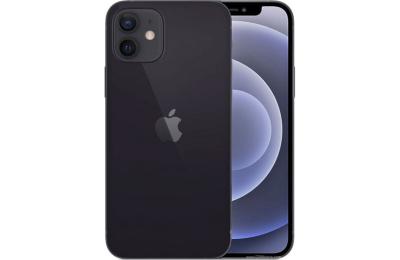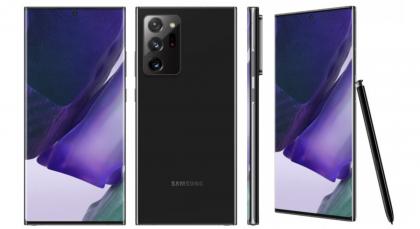OLED Smartphones - introduction and industry news - Page 21
UBI: the COVID pandemic decreased demand for OLED smartphone displays, while demand for wearable displays have risen sharply
UBI Research estimates that OLED shipments in the first half of 2020 were 231 million units ($13.2 billion), pretty much the same as in the first half of 2019 (230 million, $13.8 billion). UBI estimates that the COVID-19 pandemic decreased demand for OLED displays.

Looking at market segmentation, OLED shipments for smartphones decreased from 200.4 million units to 189.8 million units. Foldable phones increased from 70,000 units to 1.7 million units, and smartwatch display shipments increased sharply from 22 million units in the first half of 2019 to 33.5 million in the first half of 2020.
Apple announces its iPhone 12 lineup, all with OLED displays
Apple announced its newest iPhone smartphones, and all of this year's models have OLED displays. All of Apple's new phones also include 5G connectivity and the company's latest A14 bionic 5nm chipset. Interestingly, all these OLED displays offer a refresh rate of 60Hz, it seems as if we'll have to wait for at least one more year to get 90Hz or 120Hz displays from Apple.

So first up we have the iPhone 12 Pro, which features a 6.1-inch 1170x2532 800-nits XDR AMOLED display. The larger iPhone 12 Pro Max has a 6.7-inch 1284x2778 AMOLED. Next we have the iPhone 12 - with its 6.1-inch 1170x2532 HDR10 XDR AMOLED display. Apple also introduced a smaller model, called the iPhone 12 mini which sports a 5.4-inch 1080x2340 HDR10 XDR AMOLED display.
Online review shows that the Galaxy Z Fold 2 is more durable than the original Fold, but not by much
When Samsung launched its original foldable smartphone, it used a polyimide-based cover, and the screen was fragile and not very durable. Later in 2020 Samsung Display launched its ultra-thin-glass (UTG) cover (produced by Schott and processed by Dowoo Insys) which the company said is more durable the the Polyimide.
Samsung Electronics continued to adopt the new foldable UTG cover and used it in its Samsung's Galaxy Z Fold2 5G (7.6" 1768x2208 HDR10+ 120Hz Dynamic AMOLED) smartphone. But the question remains - just how more durable is the UTG-protected OLED?
DSCC: the foldable/rollable smartphone market will grow to $105 billion by 2025
DSCC says that the foldable/rollable smartphone market will be one of the fastest growing consumer electronics market - and sales of such smartphones will grow to $105 billion by 2025, in a CAGR of 80%.
The display area used in such devices will grow a 93% CAGR, to reach 1.2 million square meters by 2025. In terms of units, 74.4 million rollable/foldable smartphones will ship in 2025.
BOE plans to become the world's leading flexible OLED maker by 2024
BOE says that its current flexible OLED market share is around 20%. The company says that it plans to increase its market share to 40% by 2024 - and become the world's leader in flexible OLED production by then. BOE estimates that the flexible OLED market will generate $49.7 billion in revenues in 2024.

Earlier this month BOE announced that it shipped 16 million flexible OLEDs in the first half of 2020, and the company expects to ship over 40 million panels in the whole of 2020. BOE main problems currently lie with its Huawei account - the Chinese smartphone maker is expected to producing only 50 million smartphones in 2021 - down from 190 million in 2020. BOE hopes to recoup some of its Huawei orders by becoming an OLED supplier to Apple.
Samsung Electronics collaborates with Corning on Ultra Thin Glass technology for foldable OLEDs
Samsung started to adopt ultra-thin glass covers for its foldable AMOLEDs, instead of polyimide, as it says UTG offers higher durability. In the Galaxy Z Flip, Samsung used a UTG cover produced by Korea-based Dowoo Insys, who processes Schott's ultra thin glass for Samsung Display.

In April 2020 it was reported that Samsung Electronics wants to develop its own UTG cover technology, as as it feels that Samsung Display's UTG is still not robust enough and the company also wants to increase production yields and reduce costs. Now there are new reports from Korea that say that Samsung Electronics is collaborating with Corning in this new UTG project.
ZTE launches the world's first smartphone with an under-the-OLED camera, the Axon 20 5G
ZTE announced the Axon 20 5G, the first smartphone with an under-the-OLED camera. The Axon 20 5G features a full-screen 6.92-inch 1080x2460 90Hz AMOLED display and will ship in a few days in China for around $320.

The Axon 20 5G also sports an under-the-display fingerprint sensor - and ZTE says that it includes an "under-the-OLED" sound, which could mean that the OLED acts as a speaker membrane (in a similar way to LG's Crystal Sound Technology), but it is not clear exactly.
Xiaomi to start making smartphones with Under-Display cameras next year, developed its own pixel scheme
Xiaomi announced that it will start producing smartphones that adopt the company's Under-Display Camera technology next year. Xiaomi says that this is actually the company's third-gen under-the-OLED camera technology, that hasn't been adopted in mass market products yet.

Xiaomi says that it's latest development enabled the front camera to be completely disguised. This was achieved by a new pixel arrangement (with a large aperture ratio) developed by Xiaomi, and the optimization of the camera algorithms.
UBI: rigid OLED smartphone shipments dropped by 40% in Q2 2020
UBI Research estimates that OLED smartphone display shipments reached 87 million units in Q2 2020 (down 23.1% compared to Q2 2019, and down 17% compared to Q1 2020).

The drop in rigid OLED smartphone display shipments was 40.3% from Q2 2019 to Q2 2020 - due to a drop in mid-tier smartphone production in China. Flexible OLED shipments actually rose 38% from last year as you can see in the chart below.
DisplayMate: the Samsung Galaxy Note 20 Ultra has the best AMOLED display ever
Samsung recently announced the Galaxy Note 20 Ultra smartphone, with a 6.9-inch 1440x3088 Dynamic AMOLED with an LTPO backplane. The display supports a refresh rate of 120Hz at Full-HD resolution and 60Hz at QHD. The Galaxy Note family will ship on August 21 2020.

The display measurements experts at DisplayMate tested a Note 20 Ultra phone, and reports that Samsung again improved its OLED display performance (it "raises the bar significantly higher", in fact) and this high performance display will be the competitive baseline for all upcoming smartphone displays.
Pagination
- Previous page
- Page 21
- Next page


